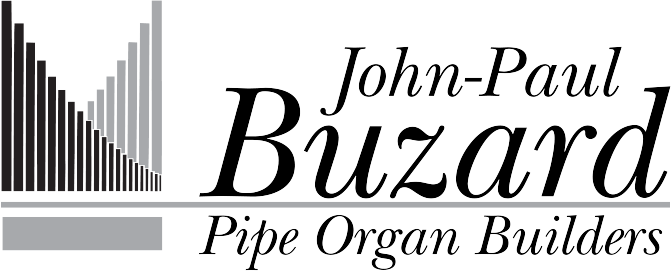First Congregational Church
Crystal Lake, Illinois
Completed 1997
18 straight-speaking stops, 24 ranks across two manuals and pedal
Although the original church was built in 1867, this is First Congregational Church’s first pipe organ. The first instrument was a reed organ, pumped by the organist, which served faithfully for nearly 100 years. The reed organ’s handsome case was made into the Church’s pulpit, still in use today. A Hammond electronic instrument followed, which the new pipe organ replaces.
From the project’s very inception, it was apparent that this would be a very special instrument and installation. The prospect to marry the architecture of the new organ’s case to the stately, singularly American architecture of this Church was quite exciting. The ability to incorporate the organ’s design into a greatly expanded Chancel allowed the organ and the building to be brought into perfect proportion with each other. The result is a classic American architectural and organbuilding statement.
Stop List
16′ Leiblich Gedeckt (wood)
8′ Open Diapason (tin-façade)
8′ Melodia (open wood)
4′ Octave
4′ Flute d’ Amour (wood)
2′ Fifteenth
1 1/3′ Fourniture IV
8′ Minor Trumpet (Sw 16′)
Cymbalstern
16′ Great to Great
Great Unison Off
4′ Great to Great
16′ Swell to Great
8′ Swell to Great
4′ Swell to Great
8′ Stopped Diapason (wood)
8′ Salicional
8′ Voix Celeste (TC)
4′ Principal
4′ Harmonic Flute (open metal)
2′ Flageolet (harmonic)
2′ Plein Jeu IV
16′ Basson
8′ Trompette
8′ Oboe
4′ Clarion (ext. 16′)
Tremulant
16′ Swell to Swell
Swell Unison Off
4′ Swell to Swell
32′ Subbass (1-12 elect. ext. of Basson)
32′ Lieblich Gedeckt (wood)
16′ Bourdon (wood)
16′ Lieblich Gedeckt (Gt) (wood)
8′ Octave (tin façade)
8′ Bass Flute (ext. 16′ wood)
8′ Gedeckt Flute (Gt) (wood)
4′ Choral Bass (ext. 8′)
16′ Trombone
16′ Basson (Sw)
4′ Clarion (Sw) (ext. 16′)
8′ Great to Pedal
4′ Great to Pedal
8′ Swell to Pedal
4′ Swell to Pedal
In much the same way as the new organ was designed to visually relate to the historic building, the tonal design is a contemporary adaptation of American organbuilding styles prevalent when the building was originally built. Upon reading the specification, one notices a large percentage of the pipes being made of wood as in earlier times; there are more open and harmonic flutes in the organ than one might typically see in new instruments. The disposition of the flute choruses, large-scaled Great Open Diapason and plaintive English Oboe are also reminiscent of many 19th century organs.
The inclusion of mixtures on the manuals, a full battery of Swell reeds, employment of contemporary voicing techniques and classic scaling concepts, however, makes this an instrument of our time. It possesses a compelling sound, to lead this vibrant congregation in its musical expressions of worship: thrilling hymn-singing, accompanying choral and instrumental ensembles, and musically rendering a wide variety of solo literature for voluntaries. A relatively small organ is being made to do a lot.
Sensitive organbuilders strive for the forms and proportions in their cases to exhibit some measure of ecclesiastical symbolism. Although the results for many are often coincidental, some symbolic gestures lend themselves to classic proportions and have deliberately been considered in this organ’s visual design. The Trinity of God the Father, Son and Holy Ghost are enumerated by the three towers. The two inner “flats” have three pipes each. Many of the critical dimensions in the organ case are deliberately divisible by three.
The organ has two manual keyboards called the Great and the Swell, and a set of pedal keys. The pipes in the Great division are located in the left side of the organ case and those of the Swell division are enclosed on the right in an inner case with movable shutters (like venetian blinds) which the organist can use to effect a gradual increase or decrease of volume. The Pedal pipes are located in both the Great and Swell areas within the organ. The pipes in the facade all speak: the two outside towers’ pipes are from the Pedal 8′ Octave; the Center tower and two adjoining flats’ pipes are from the Great 8′ Open Diapason. The front pipes are made of lightly polished English tin, to present an elegant, soft quality to the facade and to capture the classic blue color of the walls in its patina.
– John-Paul Buzard

